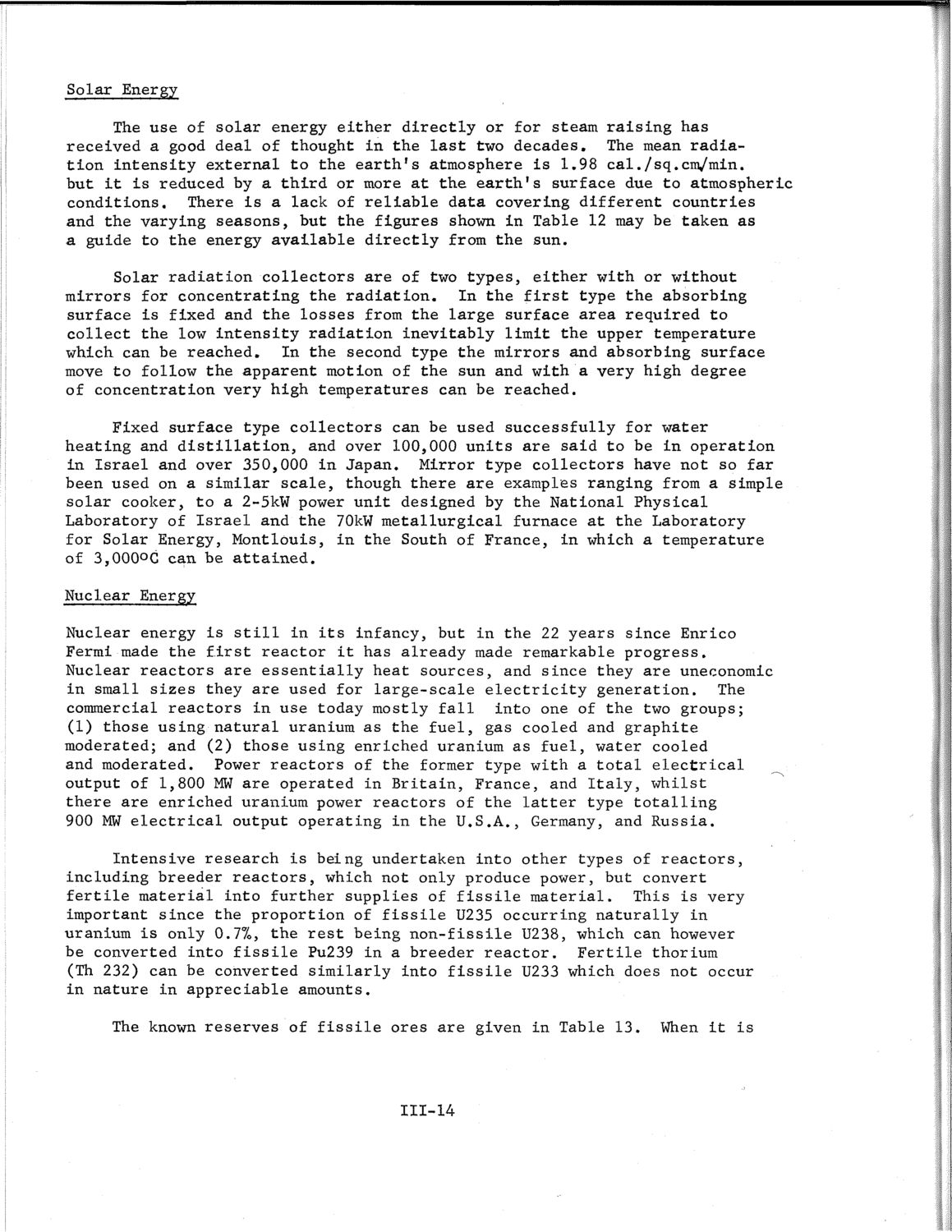| |
| |
Caption: SWE - Proceedings of the First International Conference of Women Engineers and Scientists
This is a reduced-resolution page image for fast online browsing.

EXTRACTED TEXT FROM PAGE:
Solar Energy The use of solar energy either directly or for steam raising has received a good deal of thought in the last two decades. The mean radiation intensity external to the earth's atmosphere is 1.98 cal./sq.cm/min. but it is reduced by a third or more at the earth's surface due to atmospheric conditions. There is a lack of reliable data covering different countries and the varying seasons, but the figures shown in Table 12 may be taken as a guide to the energy available directly from the sun. Solar radiation collectors are of two types, either with or without mirrors for concentrating the radiation. In the first type the absorbing surface is fixed and the losses from the large surface area required to collect the low intensity radiation inevitably limit the upper temperature which can be reached. In the second type the mirrors and absorbing surface move to follow the apparent motion of the sun and with a very high degree of concentration very high temperatures can be reached. Fixed surface type collectors can be used successfully for water heating and distillation, and over 100,000 units are said to be in operation in Israel and over 350,000 in Japan. Mirror type collectors have not so far been used on a similar scale, though there are examples ranging from a simple solar cooker, to a 2-5kW power unit designed by the National Physical Laboratory of Israel and the 70kW metallurgical furnace at the Laboratory for Solar Energy, Montlouis, in the South of France, in which a temperature of 3,000°C can be attained. Nuclear Energy Nuclear energy is still in its infancy, but in the 22 years since Enrico Fermi made the first reactor it has already made remarkable progress. Nuclear reactors are essentially heat sources, and since they are uneconomic in small sizes they are used for large-scale electricity generation. The commercial reactors in use today mostly fall into one of the two groups; (1) those using natural uranium as the fuel, gas cooled and graphite moderated; and (2) those using enriched uranium as fuel, water cooled and moderated. Power reactors of the former type with a total electrical output of 1,800 MW are operated in Britain, France, and Italy, whilst there are enriched uranium power reactors of the latter type totalling 900 MW electrical output operating in the U.S.A., Germany, and Russia. Intensive research is being undertaken into other types of reactors, including breeder reactors, which not only produce power, but convert fertile material into further supplies of fissile material. This is very important since the proportion of fissile U235 occurring naturally in uranium is only 0 7 < , the rest being non-fissile U238, which can however .7> be converted into fissile Pu239 in a breeder reactor. Fertile thorium (Th 232) can be converted similarly into fissile U233 which does not occur in nature in appreciable amounts. The known reserves of fissile ores are given in Table 13. When it is 111-14
| |